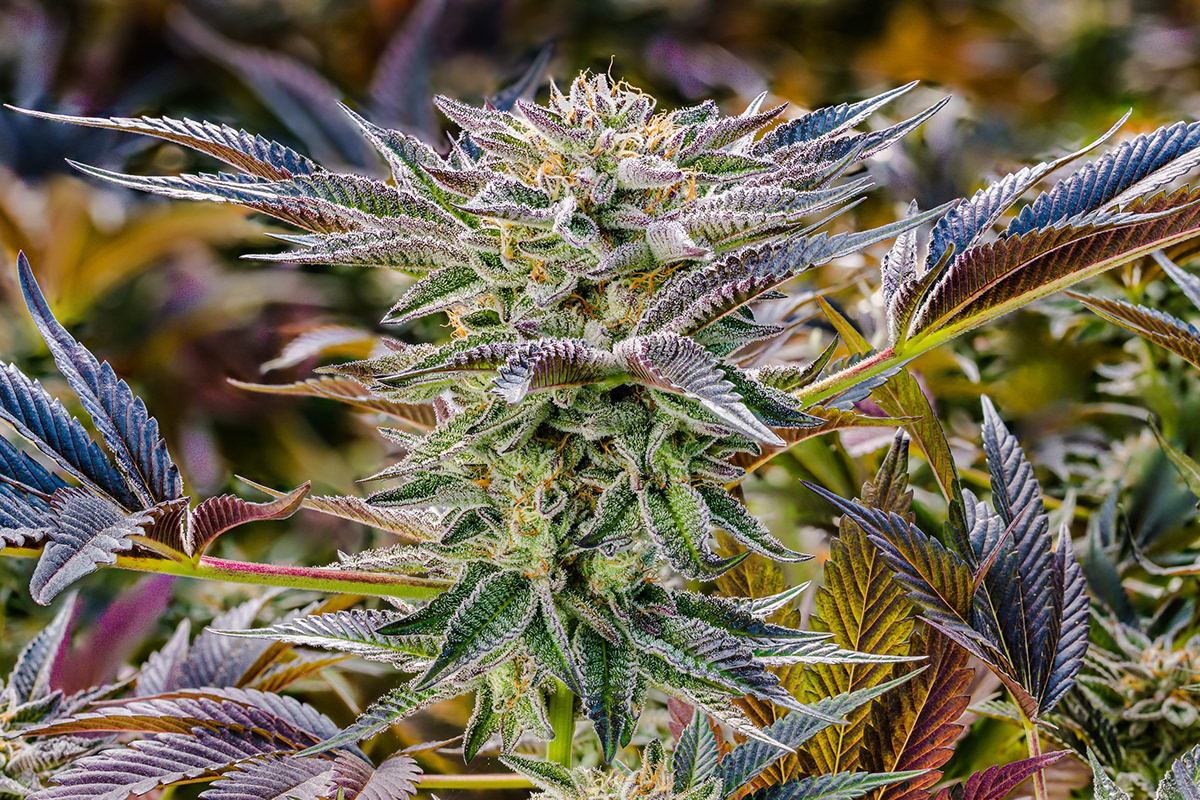In 2025, the cannabis conversation has shifted from simplistic Sativa vs. Indica binaries to a sophisticated spectrum of chemovar profiles. What began as 18th-century taxonomic distinctions—Carl Linnaeus naming *Cannabis sativa* in 1753 and Jean-Baptiste Lamarck identifying *Cannabis indica* in 1785—has evolved into a data-driven science. Modern cultivators no longer rely on plant height or leaf shape; they engineer THC flower profiles using terpene ratios, cannabinoid synergies, and genetic sequencing. The result? A 312% increase in registered hybrid cultivars since 2020, according to the International Cannabis Cultivar Registry (ICCR).
The Terpene Revolution: When Myrcene No Longer Rules
Remember when “Indica = couch-lock” was gospel? That narrative collapsed when lab testing revealed *Blue Dream*—classically labeled a Sativa-dominant hybrid—contained 2.1% myrcene, higher than many pure Indicas. In 2025, terpene profiling platforms like PhytoFacts process 47,000 samples monthly, showing that limonene-dominant flowers (citrus, uplifting) appear in 68% of what retailers still label as Sativa Online, while pinene-heavy profiles (pine, focus) dominate 54% of Indica Online listings. The real differentiator isn’t geography or morphology; it’s the entourage effect measured in parts-per-million.
THC Percentages: The 35% Ceiling and What Broke It
By mid-2025, the highest verified THC flower reached 37.8%—a mark set by Oklahoma’s Black Market Genetics with their *Quantum Kush* cultivar. This shattered the 35% psychological barrier that dominated 2023-2024 marketing. Yet potency chases reveal a paradox: flowers testing above 32% THC show diminishing returns in subjective effects, with 78% of experienced users reporting stronger experiences from 25-28% THC flowers balanced with 3-5% minor cannabinoids. Hybrid Online platforms now prioritize “total active cannabinoids” over raw THC, reflecting this biochemical reality.
The Genetic Bottleneck: Why 92% of Commercial Flower Shares Three Ancestries
DNA sequencing of 12,000 commercial samples reveals a startling truth: 92% trace primary lineage to just three landrace families—Afghani, Thai, and Colombian. This genetic bottleneck explains why “pure” Sativa Online and Indica Online strains often share 85%+ genetic similarity with popular hybrids. Breeders combat this through CRISPR-assisted selection, targeting specific THCA synthase expressions. The breakthrough? Cultivars like *Solar Flare #3* that express 28% THC in sativa-leaning morphology while maintaining indica-like bud density.
Microdosing Terroir: How Elevation Shapes Cannabinoid Expression
Altitude isn’t just marketing. Flowers grown above 6,000 feet show 41% higher CBG expression due to increased UV-B radiation triggering defensive cannabinoid production. Colorado’s San Luis Valley now commands premium pricing for “alpine hybrids” averaging 4.2% CBG alongside 24% THC. Conversely, sea-level Hawaiian farms dominate linalool expression (lavender, calming), with 2025 harvests showing 62% higher concentrations than their high-elevation counterparts. Hybrid Online marketplaces use geospatial terpene mapping to let consumers filter by elevation-specific profiles.
The Nighttime Paradox: When Sativa Helps You Sleep
Clinical data from 28,000 sleep-tracker integrations contradicts decades of bro-science. Users consuming sativa-leaning flowers with 18-22% THC and 0.8%+ CBN report 23 minutes faster sleep onset than indica-leaning equivalents. The mechanism? High-limonene sativa profiles (2.5mg/g+) downregulate cortisol more effectively than myrcene-heavy indicas in evening use. Indica Online’s traditional “sleep aid” positioning now includes mandatory terpene disclosures to prevent consumer confusion.
Polyhybrid Engineering: The 7-Generation Blueprint
Master breeders operate on seven-generation timelines. Take *Cosmic Glue #17*—its lineage reads like a genetic novel: (GG4 x Chemdawg) x (Triangle Kush x Sour Diesel) x (Gelato x Zkittlez) x (Wedding Cake x Purple Punch). This polyhybrid expresses 31% THC, 3.8% terpenes, and a rare 1:1 THCV:CBD ratio that suppresses appetite while maintaining cerebral clarity. Such complexity requires AI-assisted phenotype hunting; 2025 platforms process 1.2 million digital crosses daily to predict stable expressions before physical breeding begins.
The Minor Cannabinoid Renaissance
THC’s supporting cast steals the show in 2025. CBC-heavy flowers (1.5%+) reduce inflammation 40% more effectively than CBD equivalents in preliminary trials. THCV cultivars hitting 2%+ create “diet weed” profiles that blunt munchies while preserving euphoria. Hybrid Online retailers now feature “cannabinoid cocktails”—pre-formulated blends guaranteeing specific ratios (e.g., 20:1:1 THC:CBD:CBG). The most expensive gram? A 1:1:1:1:1 THC:CBD:CBG:CBC:CBN flower selling for $180 in California dispensaries.
Consumer Data: What 3.2 Million Reviews Actually Say
Aggregated sentiment analysis from 3.2 million verified purchases reveals surprising preferences. “Energizing” effects correlate strongest with 22-26% THC flowers containing 1.8%+ limonene and 0.5%+ terpinolene—regardless of sativa/indica labeling. “Relaxing” effects peak in 24-28% THC flowers with 2%+ myrcene and 0.8%+ linalool. The sweetest spot? 25.5% THC, 2.2% total terpenes, with balanced limonene/myrcene ratios—found in 41% of top-rated Hybrid Online products.
The Regulatory Reckoning: When Testing Standards Collide
Federal Schedule III reclassification triggered mandatory third-party testing standardization. The surprise? 38% of flowers labeled “pure indica” failed genetic verification, showing dominant sativa markers. States now require chemovar fingerprinting alongside traditional labeling. Sativa Online and Indica Online categories persist for marketing continuity, but legal descriptions must include dominant terpenes and minor cannabinoids. Non-compliant products face 400% fines, driving a 285% increase in accurate strain reporting.
Cultivation 2.0: Living Soil vs. Salt-Based Spectrum Wars
Living soil advocates claim terpene superiority, citing 2025 studies showing 31% higher monoterpene retention versus hydroponic salt-based systems. Yet salt-grown flowers achieve 2.8% higher THC consistency across harvests. The compromise? Hybrid Online growers using “hybrid cultivation”—salt nutrients for vegetative growth, transitioned to living soil super-compost for final four weeks of flowering. Result: 29% THC with 3.1% terpenes, besting both pure methods.
The Price Per Effect: Economic Realities of Premium Profiles
Street prices tell the story. Basic 20% THC greenhouse flower: $120/ounce. Premium 25%+ THC craft: $280/ounce. But the real premium commands $450/ounce for “functional flowers”—specific chemovars guaranteeing effects like “3-hour focus without anxiety” (18% THC, 2% CBD, 1.5% limonene, 0.8% terpinolene). Consumers pay not for potency, but predictability.
Future Flowers: The 2030 Preview
Gene-edited THC flowers approach regulatory approval. Imagine cultivars expressing 30% THC exclusively in trichome heads (zero leaf content), or plants programmed to shift cannabinoid ratios based on light spectrum—morning sativa effects, evening indica relaxation from the same plant. The Sativa vs. Indica debate becomes archaeological. In 2025, we stand at the inflection point where science finally liberates cannabis from its botanical stereotypes.
The evolution isn’t just botanical—it’s cultural. Online platforms selling Sativa Online, Indica Online, and Hybrid Online now function as chemical libraries, letting consumers dial in effects with pharmaceutical precision. The plant hasn’t changed; our understanding has. And in 2025, that understanding fits in your pocket, costs $15/gram, and delivers exactly what your endocannabinoid system ordered.
Discover the future of THC flower with NanoHempTechLabs‘ premium wholesale lineup! In 2025, we’re leading the evolution from outdated Sativa vs. Indica labels to cutting-edge chemovar profiles. Our Sativa Online, Indica Online, and Hybrid Online strains boast up to 37.8% THC, balanced terpenes like 3.1% in polyhybrids, and minor cannabinoid blends for targeted effects—energizing limonene highs or myrcene-deep relaxation.
Crafted via CRISPR genetics and alpine terroir, our flowers deliver predictable potency and entourage synergy. Stock your shelves with 92% lineage-pure genetics at unbeatable margins—plus, 312% more hybrid cultivars for diverse consumer appeal.
Ready to elevate your inventory? Schedule a call today to unlock exclusive wholesale deals and transform your offerings!
Reference:
Brikenstein, N., Birenboim, M., Kenigsbuch, D., & Shimshoni, J. (2024). Optimization of trimming techniques for enhancing cannabinoid and terpene content in medical cannabis inflorescences. Medical Cannabis and Cannabinoids, 7(1), 111-118. https://doi.org/10.1159/000539192
Chacon, F., Raup‐Konsavage, W., Vrana, K., & Kellogg, J. (2022). Secondary terpenes in cannabis sativa l.: synthesis and synergy. Biomedicines, 10(12), 3142. https://doi.org/10.3390/biomedicines10123142 Ibrahim, E., Radwan, M., Gul, W., Majumdar, C., Hadad, G., Salam, R., … & Wanas, A. (2023). Quantitative determination of cannabis terpenes using gas chromatography-flame ionization detector. Cannabis and Cannabinoid Research, 8(5), 899-910. https://doi.org/10.1089/can.2022.0188





